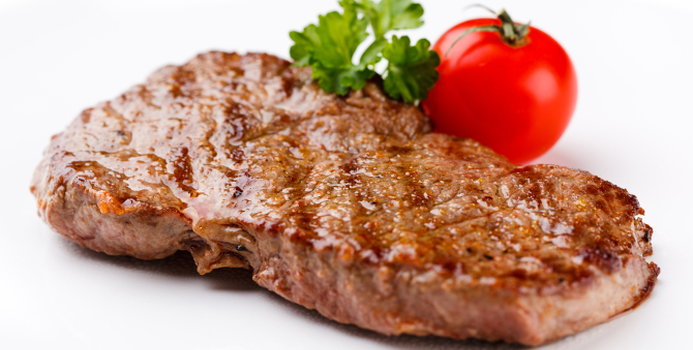Regardless of where food comes from or how it's prepared, food safety is an important issue facing all people, from individuals at home to restaurants and caterers. A major question that many people have regarding food safety is the relationship between meat or poultry color and its indication of freshness in the product. This article will help clarify this issue and explain the aspects of coloration and freshness in different foods.
What Can Change the Color of Meat or Poultry?
Meat takes its color from a naturally occurring protein called myglobin, which is responsible primarily for the reddish color of meat. When mixed with oxygen, myglobin takes on a bright, cherry red color that most consumers are used to seeing in cuts of meat. The color of meat is also affected by an animal's age, species and sex; for example, myglobin levels increase with age, therefore an an older animal may produce a darker cut of meat due to a higher concentration of myglobin. Additionally, the bright fluorescent lights in most grocery stores, as well as oxidation due to oxygen exposure, may cause fading or darkening of meat while it is packaged.
The usual color of poultry generally covers a larger spectrum than that of meat, ranging from bluish-white to yellow. Again, color is dependent on the age and sex of the bird; younger poultry typically has less fat under the skin, causing a bluish cast, while yellowish skin could be caused by the presence of marigold flowers in the bird feed. Unlike meat, however, the poultry color usually doesn't change color with light or air exposure.
Does Color Change Indicate Spoilage?
While color change may occasionally indicate spoilage in meat or poultry, it is typically not the best indicator of a product's degree of freshness. Because both meat and poultry can range so significantly in color, a better indication of food safety is the smell and surface of a piece of meat or poultry. If it also smells off, is sticky to the touch or even slimy, the product is likely spoiled. It's also important to note that color changes in meat or poultry when frozen are commonplace and rarely affect food safety. These color changes can be avoided by properly wrapping and storing meat in freezer bags or paper.
What Is a Safe Color for Cooked Meat or Poultry?
Evidently, cuts of steak may be cooked very lightly and remain pink or even red in the center. However, ground beef may also remain slightly pink even when fully cooked due to the reaction of myglobin to heat. It may also be caused by cooking certain vegetables with the meat. It is important to test the safety of meat with a food thermometer instead of relying on color. Ground beef should be cooked to 160 °F.
Fully cooked poultry may range from pink to white to tan. Using a food thermometer is the only safe way to test poultry for proper cooking. All meat, even parts that have remained pink, are safe to consume once they have reached a temperature of 165 °F.



